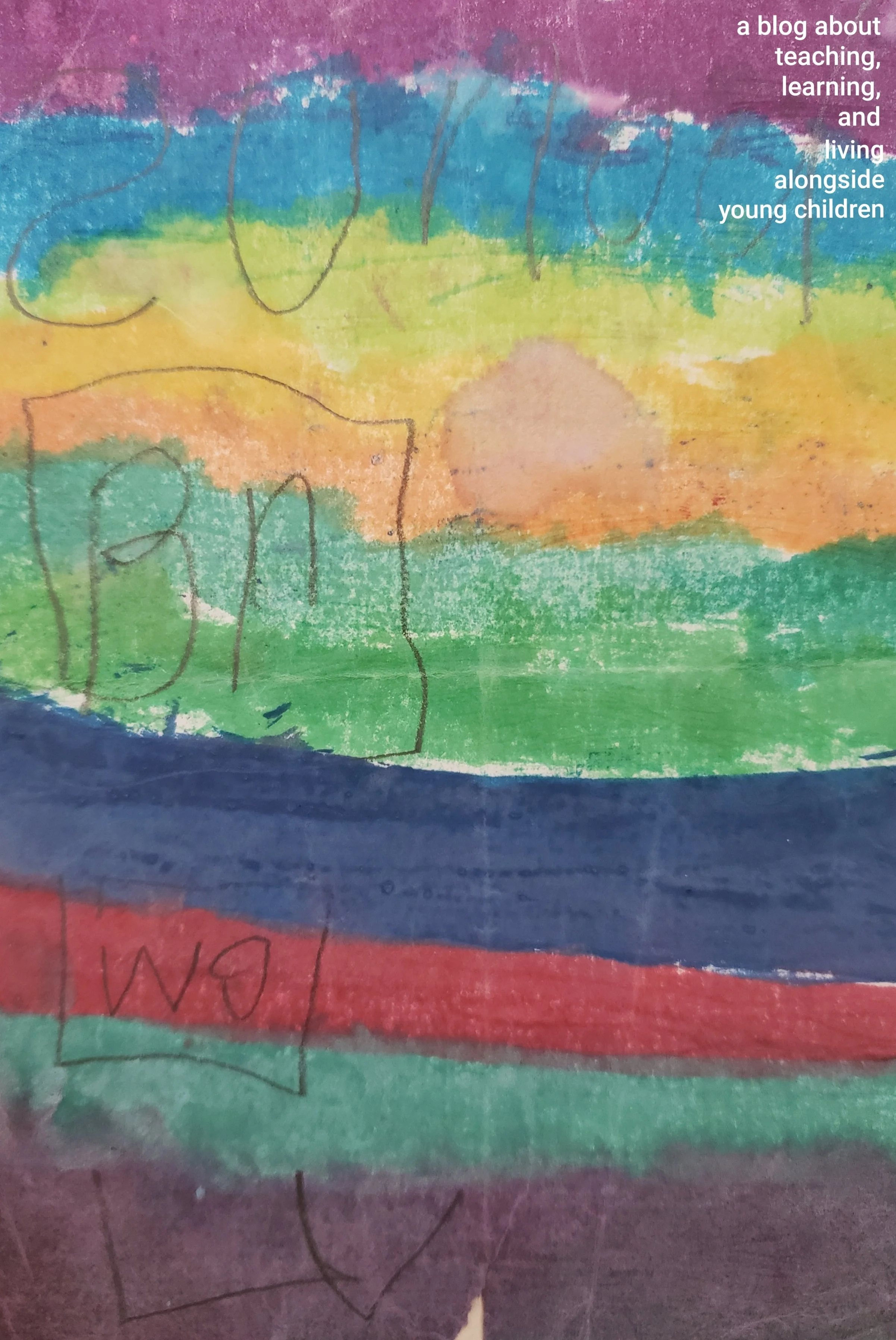What To Observe When You're Observing (In the Preschool Classroom)
/Illustration by Leia O., Age 6
Educating requires observation. It’s a central tenet of teacher training, ongoing best practices, and the collaboration we share with families and colleagues. In my work as a mentor teacher, one of the most common questions I’m asked is, “What do you look for when you observe children?” I encourage them to question - what does “observation” mean in a preschool classroom? What does it call on us to do? That we watch the children? That we recall what they did in a day? That we know who gets along with whom and can account for the feelings the child shares at home. In some senses, yes. But really, observation is more than having a general sense of each child or interaction for the purpose of reporting. If used effectively, observation is the foundation upon which we choose our next steps as teachers.
I do several kinds of observation at different times, and I consider all of these to be “teacher research.” This research is how we find answers to questions we have about these children in particular and child development overall.
Most observations are about gathering “data,” collecting information about children in various contexts. For me, the most fruitful observations I make are of the room, meaning stepping back and watching the whole room move around me to see how the environment is functioning as “the third teacher.” That’s a very Reggio Emilia phrase for a very Montessori idea - that the environment should be designed in a way that lets the children work independently from the actual teacher and minimize error, conflict, or confusion. That way, if a child constantly falls, can’t find the materials, or doesn’t know the routine, I can figure out which parts are because the child needs support in a developmental area or if the classroom itself is too crowded/cluttered/other thing I can re-design. I default to this kind of overview observation when I am wondering about where to take the goals of the group.
Individual observations are about suspending what I think I know about a child and just taking in what that child does and feels - I apply my previous knowledge when I reflect back and try to put the pieces together. At that point, I compare what I know about this child and what I know about children in general and child development overall. This gives me a sense of what goals I can set for that child. Those are goals I usually share with the family in order to align our strategies for support. “Hmm, does C. often cry when putting shoes on at home? I usually coach with words. How do you respond?” Etc.
When I observe a small group, I look at how children interact with each other and with ideas. How does an idea, a question, or a conversation change the way they interact? Like, maybe Child 1 and Child 2 always fight on their own, but in a small group they share information about the solar system that gets them both interested. Then Child 3 joins and they all suddenly have the attention span to use line tools for twenty minutes, drawing that solar system, because they care about explaining their exciting ideas. I want to see how they deepen each other’s knowledge and interest --- or not --- and then how. Then, I want to see what parts of the experience I can add or change again, testing again for variations in behavior and motivation. It’s endless but fascinating research.
Effective teaching isn’t always about getting children excited or spurring them on to the next, next, next thing. It’s important to know, based on all those observations, when to slow children down. Imagine a 5-year-old child, W., who is highly motivated to make story after story with watercolors. She wants to make a whole book of them - but I also know she struggles with trying new things and with collaboration. In this case, as cool as the idea is and as much as she would have enjoyed making those things, the experience might not have challenged her as meaningfully as having to collaborate, think through her ideas, explain to her peers, be resourceful with just a few materials, etc. Those are the crucial things I would know from observing her individually and within a group for a long time.
It’s important to remember that we are not in control of what children learn - we are instead responsible for offering them ways to learn. Ways. We observe to see how they already do this (because, honestly, children are amazing, capable people who learn in spite of all the things adults do), and then we offer them new ways to think, experiment, and follow their curiosity.


